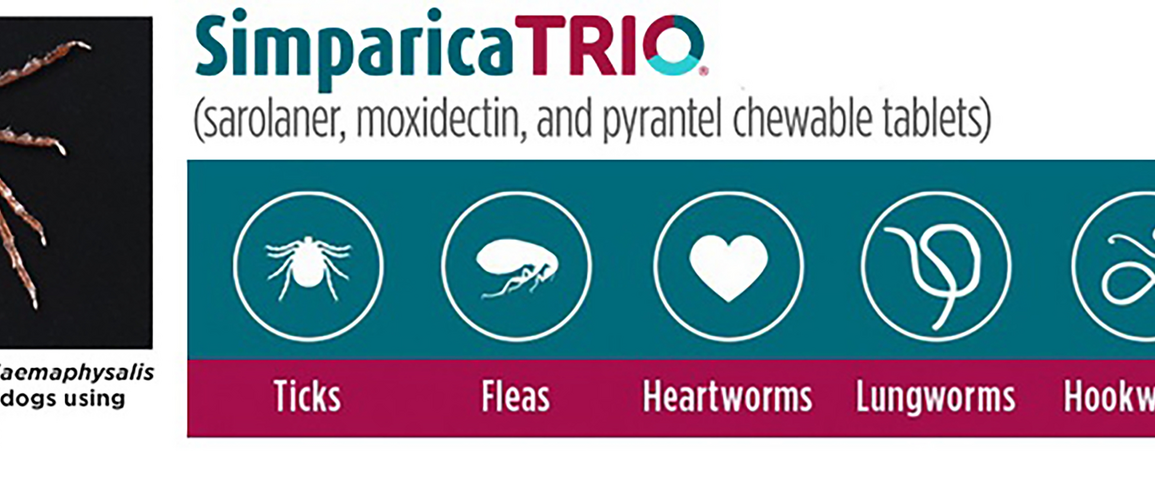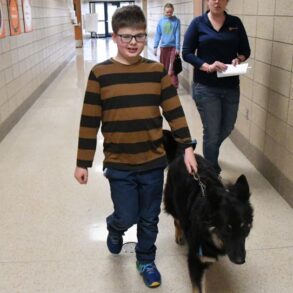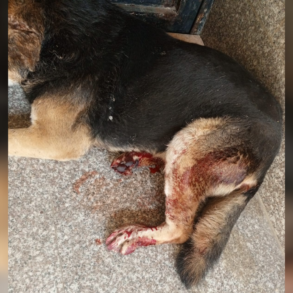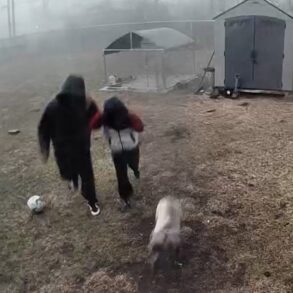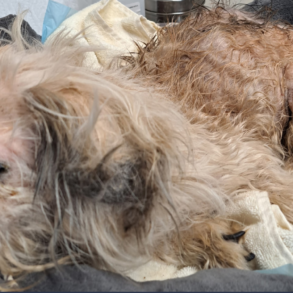
Hoogstraal H, Roberts FH, Kohls GM, Tipton VJ. Review of Haemaphysalis (kaiseriana) longicornis Neumann (resurrected) of Australia, New Zealand, New Caledonia, Fiji, Japan, Korea, and Northeastern China and USSR, and its parthenogenetic and bisexual populations (Ixodoidea, Ixodidae). J Parasitol. 1968;54:1197–213.
Shimada Y, Beppu T, Inokuma H, Okuda M, Onishi T. Ixodid tick species recovered from domestic dogs in Japan. Med Vet Entomol. 2003;17:38–45.
Tenquist J, Charleston W. A revision of the annotated checklist of ectoparasites of terrestrial mammals in New Zealand. J R Soc N Z. 2001;31:481–542.
Zhao L, Li J, Cui X, Jia N, Wei J, Xia L, et al. Distribution of Haemaphysalis longicornis and associated pathogens: analysis of pooled data from a China field survey and global published data. Lancet Planet Health. 2020;4:e320–9. https://doi.org/10.1016/S2542-5196(20)30145-5.
Roberts F. A systematic study of the Australian species of the genus Haemaphysalis Koch (Acarina: Ixodidae). Aust J Zool. 1963;11:35–80.
Rainey T, Occi JL, Robbins RG, Egizi A. Discovery of Haemaphysalis longicornis (Ixodida: Ixodidae) parasitizing a sheep in New Jersey United States. J Med Entomol. 2018;55:757–9. https://doi.org/10.1093/jme/tjy006.
USDA: National Haemaphysalis longicornis (Asian longhorned tick) situation report. Edited by United States Department of Agriculture Animal and Plant Health Inspection Service VS: United States Department of Agriculture; 2023.
USDA: Asian longhorned tick in the USA – 9/7/2023. https://www.arcgis.com/apps/webappviewer/index.html?id=0fccbb8ca404418d810853860978fd04. Accessed 24 Jan 2024.
Beard CB, Occi J, Bonilla DL, Egizi AM, Fonseca DM, Mertins JW, et al. Multistate infestation with the exotic disease-vector tick Haemaphysalis longicornis – United States August 2017-September 2018. Morb Mortal Wkly Rep. 2018;67:1310–3. https://doi.org/10.1558/mmwr.mm6747a3.
Heath A. Biology, ecology and distribution of the tick, Haemaphysalis longicornis Neumann (Acari: Ixodidae) in New Zealand. N Z Vet J. 2016;64:10–20. https://doi.org/10.1080/00480169.2015.1035769.
Namgyal J, Couloigner I, Lysyk TJ, Dergousoff SJ, Cork SC. Comparison of habitat suitability models for Haemaphysalis longicornis Neumann in North America to determine its potential geographic range. Int J Env Res Public Health. 2020;17:8285.
Rochlin I. Modeling the Asian longhorned tick (Acari: Ixodidae) suitable habitat in North America. J Med Entomol. 2019;56:384–91. https://doi.org/10.1093/jme/tjy210.
Raghavan RK, Barker SC, Cobos ME, Barker D, Teo EJM, Foley DH, et al. Potential spatial distribution of the newly introduced long-horned tick Haemaphysalis longicornis in North America. Sci Rep. 2019;9 1:498. https://doi.org/10.1038/s41598-018-37205-2.
Dantas-Torres F, Chomel BB, Otranto D. Ticks and tick-borne diseases: a One Health perspective. Trends Parasitol. 2012;28:437–46. https://doi.org/10.1016/j.pt.2012.07.003.
Luo LM, Zhao L, Wen HL, Zhang ZT, Liu JW, Fang LZ, et al. Haemaphysalis longicornis ticks as reservoir and vector of severe fever with thrombocytopenia syndrome virus in China. Emerg Infect Dis. 2015;21:1770–6. https://doi.org/10.3201/eid2110.150126.
Zhuang L, Du J, Cui XM, Li H, Tang F, Zhang PH, et al. Identification of tick-borne pathogen diversity by metagenomic analysis in Haemaphysalis longicornis from Xinyang China. Infect Dis Poverty. 2018;7:45. https://doi.org/10.1186/s40249-018-0417-4.
Chen Z, Liu Q, Liu J-Q, Xu B-L, Lv S, Xia S, et al. Tick-borne pathogens and associated co-infections in ticks collected from domestic animals in central China. Parasit Vect. 2014;7 1:237. https://doi.org/10.1186/1756-3305-7-237.
Yang YYZ, Kelly P, Li J, Ren Y, Wang C. Borrelia miyamotoi sensu lato in Père David deer and Haemaphysalis longicornis ticks. Emerg Infect Dis. 2018;24:928–31. https://doi.org/10.3201/eid2405.171355.
Zhuang L, Sun Y, Cui XM, Tang F, Hu JG, Wang LY, et al. Transmission of severe fever with thrombocytopenia syndrome virus by Haemaphysalis longicornis ticks China. Emerg Infect Dis. 2018;24:868–71. https://doi.org/10.3201/eid2405.151435.
Yun SM, Song BG, Choi W, Roh JY, Lee YJ, Park WI, et al. First isolation of severe fever with thrombocytopenia syndrome virus from Haemaphysalis longicornis ticks collected in severe fever with thrombocytopenia syndrome outbreak areas in the Republic of Korea. VBZD. 2016;16:66–70. https://doi.org/10.1089/vbz.2015.1832.
Crump A, Tanimoto T. Severe fever with thrombocytopenia syndrome: Japan under threat from life-threatening emerging tick-borne disease. JMA J. 2020;3:295–302. https://doi.org/10.31662/jmaj.2019-0073.
Oakes VJ, Yabsley MJ, Schwartz D, LeRoith T, Bissett C, Broaddus C, et al. Theileria orientalis Ikeda genotype in cattle, Virginia, USA. Emerg Infect Dis. 2019;25:1653–9. https://doi.org/10.3201/eid2509.190088.
Iduu N, Barua S, Falkenberg S, Armstrong C, Stockler JW, Moye A, et al. Theileria orientalis Ikeda in cattle Alabama USA. Vet Sci. 2023;10(11). 638.https://doi.org/10.3390/vetsci10110638.
Heath A. Ectoparasites of livestock and companion animals in New Zealand. N Z Vet J. 2002;50 sup3:48. https://doi.org/10.1080/00480169.2002.36266.
Heath A, Tenquist J, Bishop D. Goats, hares, and rabbits as hosts for the New Zealand cattle tick Haemaphysalis longicornis. N Z J Zool. 1987;14:549–55. https://doi.org/10.1080/03014223.1987.10423028.
Kim BJ, Kim H, Won S, Kim HC, Chong ST, Klein TA, et al. Ticks collected from wild and domestic animals and natural habitats in the Republic of Korea. Korean J Parasitol. 2014;52:281–5. https://doi.org/10.3347/kjp.2014.52.3.281.
Iwakami S, Ichikawa Y, Inokuma H. A nationwide survey of ixodid tick species recovered from domestic dogs and cats in Japan in 2011. Ticks Tick Borne Dis. 2014;5:771–9. https://doi.org/10.1016/j.ttbdis.2014.05.008.
Greay TL, Oskam CL, Gofton AW, Rees RL, Ryan UM, Irwin PJ. A survey of ticks (Acari: Ixodidae) of companion animals in Australia. Parasit Vectors. 2016;9 1:207. https://doi.org/10.1186/s13071-016-1480-y.
Shaw SE, Day MJ, Birtles RJ, Breitschwerdt EB. Tick-borne infectious diseases of dogs. Trends Parasitol. 2001;17:74–80.
Solano-Gallego L, Sainz A, Roura X, Estrada-Pena A, Miro G. A review of canine babesiosis: the European perspective. Parasit Vectors. 2016;9:336. https://doi.org/10.1186/s13071-016-1596-0.
Hatta T, Matsubayashi M, Miyoshi T, Islam K, Alim MA, Anisuzzaman, et al. Quantitative PCR-based parasite burden estimation of Babesia gibsoni in the vector tick, Haemaphysalis longicornis (Acari: Ixodidae), fed on an experimentally infected dog. J Vet Med Sci. 2013;75 1:1–6. https://doi.org/10.1292/jvms.12-0175.
Iwakami S, Ichikawa Y, Inokuma H. Molecular survey of Babesia gibsoni using Haemaphysalis longicornis collected from dogs and cats in Japan. J Vet Med Sci. 2014;76:1313–6. https://doi.org/10.1292/jvms.14-0210.
Muhlnickel CJ, Jefferies R, Morgan-Ryan UM, Irwin PJ. Babesia gibsoni infection in three dogs in Victoria. Aust Vet J. 2002;80:606–10. https://doi.org/10.1111/j.1751-0813.2002.tb10961.x.
Boozer AL, Macintire DK. Canine babesiosis. Vet Clin North Am Small Anim Pract. 2003;33:885–904. https://doi.org/10.1016/s0195-5616(03)00039-1.
Boozer L, Macintire DK. Babesia gibsoni: an emerging pathogen in dogs. Compend Cont Educ Vet. 2005;2:33–42.
Bebrysz M, Wright A, Greaves M, Rathwell Deault D, Hopkins G, Gildea E, et al. How pet owners choose antiparasitic treatments for their dogs: a discrete choice experiment. Prev Vet Med. 2021;196:105493. https://doi.org/10.1016/j.prevetmed.2021.105493.
Shoop WL, Hartline EJ, Gould BR, Waddell ME, McDowell RG, Kinney JB, et al. Discovery and mode of action of afoxolaner, a new isoxazoline parasiticide for dogs. Vet Parasitol. 2014;201:179–89. https://doi.org/10.1016/j.vetpar.2014.02.020.
Gassel M, Wolf C, Noack S, Williams H, Ilg T. The novel isoxazoline ectoparasiticide fluralaner: selective inhibition of arthropod γ-aminobutyric acid- and L-glutamate-gated chloride channels and insecticidal/acaricidal activity. Insect Biochem Mol Biol. 2014;45:111–24. https://doi.org/10.1016/j.ibmb.2013.11.009.
McTier TL, Chubb N, Curtis MP, Hedges L, Inskeep GA, Knauer CS, et al. Discovery of sarolaner: A novel, orally administered, broad-spectrum, isoxazoline ectoparasiticide for dogs. Vet Parasitol. 2016;222:3–11. https://doi.org/10.1016/j.vetpar.2016.02.019.
Little SE. Lotilaner – a novel systemic tick and flea control product for dogs. Parasit Vectors. 2017;10 1:539. https://doi.org/10.1186/s13071-017-2471-3.
McTier TL, Six RH, Fourie JJ, Pullins A, Hedges L, Mahabir SP, et al. Determination of the effective dose of a novel oral formulation of sarolaner (Simparica™) for the treatment and month-long control of fleas and ticks on dogs. Vet Parasitol. 2016;222:12–7. https://doi.org/10.1016/j.vetpar.2016.02.016.
Six RH, Everett WR, Young DR, Carter L, Mahabir SP, Honsberger NA, et al. Efficacy of a novel oral formulation of sarolaner (Simparica™) against five common tick species infesting dogs in the United States. Vet Parasitol. 2016;222:28–32. https://doi.org/10.1016/j.vetpar.2015.12.023.
Geurden T, Becskei C, Grace S, Strube C, Doherty P, Liebenberg J, et al. Efficacy of a novel oral formulation of sarolaner (Simparica™) against four common tick species infesting dogs in Europe. Vet Parasitol. 2016;222:33–6. https://doi.org/10.1016/j.vetpar.2016.03.024.
Becskei C, De Bock F, Illambas J, Mahabir SP, Farkas R, Six RH. Efficacy and safety of a novel oral isoxazoline, sarolaner (Simparica™) in the treatment of naturally occurring flea and tick infestations in dogs presented as veterinary patients in Europe. Vet Parasitol. 2016;222:49–55. https://doi.org/10.1016/j.vetpar.2016.02.007.
Scott F, Franz L, Campos DR, Azevedo TRC, Cunha D, Six RH, et al. Efficacy of sarolaner (Simparic) against induced infestations of Amblyomma cajennense on dogs. Parasit Vectors. 2017;10 1:390. https://doi.org/10.1186/s13071-017-2324-0.
Oda K, Yonetake W, Fujii T, Hodge A, Six RH, Maeder S, et al. Efficacy of sarolaner (Simparica®) against induced infestations of Haemaphysalis longicornis on dogs. Parasit Vectors. 2019;12:509. https://doi.org/10.1186/s13071-019-3765-4.
Zoetis: Simparica Trio® (sarolaner, moxidectin and pyrantel pamoate chewable tablets) package insert. https://www.zoetisus.com/content/_assets/docs/Petcare/simparica-trio-pi.pdf: Zoetis Inc; 2022.
Marchiondo AA, Holdsworth PA, Fourie LJ, Rugg D, Hellmann K, Snyder DE, et al. World Association for the Advancement of Veterinary Parasitology (W.A.A.V.P.) second edition: guidelines for evaluating the efficacy of parasiticides for the treatment prevention and control of flea and tick infestations on dogs and cats. Vet Parasitol. 2013;194 1:84–97. https://doi.org/10.1016/j.vetpar.2013.02.003.
Blagburn BL, Dryden MW. Biology, treatment, and control of flea and tick infestations. Vet Clin North Am Small Anim Pract. 2009;39:1173–200. https://doi.org/10.1016/j.cvsm.2009.07.001.
Berrada ZL, Telford SR 3rd. Burden of tick-borne infections on American companion animals. Top Companion Anim Med. 2009;24:175–81. https://doi.org/10.1053/j.tcam.2009.06.005.
Marendy D, Baker K, Emery D, Rolls P, Stutchbury R. Haemaphysalis longicornis: the life-cycle on dogs and cattle, with confirmation of its vector status for Theileria orientalis in Australia. Vet Parasitol. 2020;277s:100022. https://doi.org/10.1016/j.vpoa.2019.100022.
Liu JungZe LJ, Jiang ZaiJie JZ. Studies on the bionomics of Haemaphysalis longicornis Neumann (Acari: Ixodidae) under laboratory conditions. Acta Entomol Sinica. 1998;41:280–3.
Price KJ, Witmier BJ, Eckert RA, Boyer CN. Recovery of partially engorged Haemaphysalis longicornis (Acari: Ixodidae) ticks from active surveillance. J Med Entomol. 2022;59:1842–6. https://doi.org/10.1093/jme/tjac099.
Packianathan R, Hodge A, Bruellke N, Jackson C, Maeder S. Efficacy of combination products containing sarolaner, moxidectin and pyrantel (Simparica Trio™) or afoxolaner and milbemycin (NexGard Spectra®) against induced infestations of Ixodes holocyclus in dogs. Parasit Vectors. 2020;13 1:448. https://doi.org/10.1186/s13071-020-04323-8.
Becskei C, Liebenberg J, Thys M, Mahabir SP. Efficacy of a novel chewable tablet containing sarolaner, moxidectin and pyrantel (Simparica Trio™) against four common tick species infesting dogs in Europe. Parasit Vectors. 2020;13 1:100. https://doi.org/10.1186/s13071-020-3949-y.
Kryda K, Mahabir SP, Chapin S, Holzmer SJ, Bowersock L, Everett WR, et al. Efficacy of a novel orally administered combination product containing sarolaner, moxidectin and pyrantel (Simparica Trio™) against induced infestations of five common tick species infesting dogs in the USA. Parasit Vectors. 2020;13:77. https://doi.org/10.1186/s13071-020-3945-2.
Wright A, Hillier A, Lambert J, Mwacalimba K, Lloyd N, Kagiwada T, et al. Dog owners’ perceptions of the convenience and value of chewable oclacitinib: quantitative survey data from an international survey. Animals. 2024;14 6. https://doi.org/10.3390/ani14060952.
Kryda K, Mahabir SP, Inskeep T, Rugg J. Safety and efficacy of a novel oral chewable combination tablet containing sarolaner, moxidectin and pyrantel (Simparica Trio™) against natural flea infestations in client-owned dogs in the USA. Parasit Vectors. 2020;13 1:98. https://doi.org/10.1186/s13071-020-3952-3.
Kryda K, Six RH, Walsh KF, Holzmer SJ, Chapin S, Mahabir SP, et al. Laboratory and field studies to investigate the efficacy of a novel, orally administered combination product containing moxidectin, sarolaner and pyrantel for the prevention of heartworm disease (Dirofilaria immitis) in dogs. Parasit Vectors. 2019;12 1:445. https://doi.org/10.1186/s13071-019-3702-6.
Becskei C, Kryda K, Thys M, Holzmer S, Bowersock L, Fernandes T, et al. Efficacy of a new oral chewable tablet containing sarolaner, moxidectin and pyrantel (Simparica Trio™) against induced ascarid infections in dogs. Parasit Vectors. 2020;13 1:71. https://doi.org/10.1186/s13071-020-3950-5.
Becskei C, Thys M, Kryda K, Meyer L, Martorell S, Geurden T, et al. Efficacy of Simparica Trio™, a novel chewable tablet containing sarolaner, moxidectin and pyrantel, against induced hookworm infections in dogs. Parasit Vectors. 2020;13 1:99. https://doi.org/10.1186/s13071-020-3951-4.
Thombre AG. Oral delivery of medications to companion animals: palatability considerations. Adv Drug Deliv Rev. 2004;56:1399–413. https://doi.org/10.1016/j.addr.2004.02.012.
This post was originally published on this site be sure to check out more of their content.




